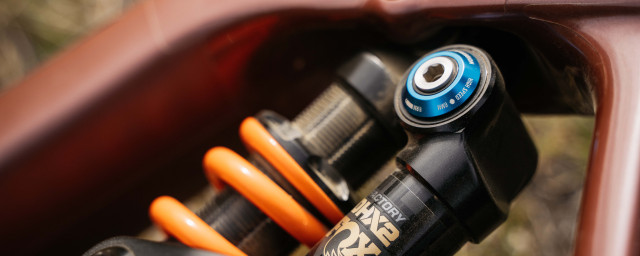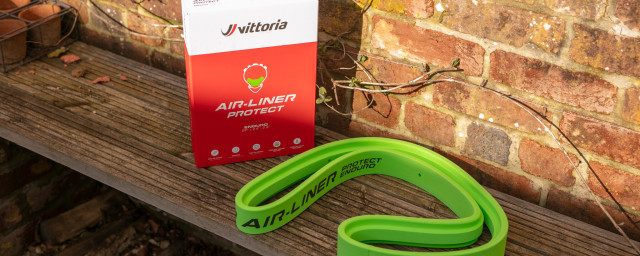After more than 30 years of manufacturing hydration packs, Camelbak has ventured into the bikepacking market with its M.U.L.E range of bags. As you might anticipate from a brand synonymous with hydration, the Frame Pack is designed to accommodate a reservoir and features a bespoke shape to fit the triangular design. While some aspects of the pack are well executed, there are notable issues including the potential for water ingress and the shape of the full bladder expanding almost beyond what the bag can comfortably accommodate.
Camelbak M.U.L.E. Frame Pack - Technical details
The M.U.L.E Frame Pack is offered in small and large sizes (pictured here) and was fitted to a Windover Beacon medium-sized frameset.
Camelbak quotes the 'small' dimensions as 40 x 18 x 5cm (this will suit XS and S frames). The 'large' version increases the length to 48cm while keeping the width and depth the same.
The pack is fitted onto the frame with Velcro straps, with multiple attachment points for the top tube, a single point for the front, two options for the down tube and two for the seat tube. The large-sized bag has ten position options for the top tube, allowing adjustability to fit around any cable stops and cable entry ports on the bike.
The Velcro straps and design make it difficult to get any tension and the areas not strapped bowed outwards. The hydration hose is one metre long. I expect it will be sufficient to fit any bike or rider preference, and it is easy to cut to size.
Camelbak M.U.L.E. Frame Pack - Performance
During testing, I used the pack with and without the reservoir and found the double zip opening - likely designed for easy reservoir access - consistently useful. The wide opening made it easy to fit longer items, such as tent poles, and when the bag was full, it allowed for easier access to items at the bottom without needing to remove anything. Inside, is a mesh net within the opening area that offers additional storage.
The bag is constructed from a variety of materials, including some recycled sailcloth. The main material is not specified and is referred to by Camelbak as sustainable nylon.
The reservoir is specifically designed for the Frame Pack, although it can be purchased separately. It has a 2-litre capacity and features a detachable hose with a large bite valve. The hose is quick and easy to remove, and the bite valve can be unscrewed, serving as the refilling point for the reservoir. The shape is tailored to fit into the bag’s triangular frame, with a hook for the top tube area and a strap on the reservoir to keep it in place. However, when the reservoir is full, it bulges significantly, making the pack much wider. This causes issues with the zip closure – it's visibly strained when they are fastened.
The hydration hose is equipped with a clip and a Velcro strap attachment but, despite attempting to secure it in various places, such as the handlebar and stem, it constantly moved around, which seems like a design oversight. After the initial test rides, I fitted a magnetic-style hose clamp and magnet, which was more secure and easier to use. A similar system or a magnet integrated into the bag could significantly improve the performance.
A notable issue with the design is around the hydration hose exit point. Despite the zips closing closely together and a section of material partially covering the opening, there remains an easy entry point for water. While the zips and fabric are waterproof, I would not trust the bag in adverse weather, particularly when the hydration bladder is inside, putting the zip under strain or riding through puddles, as the opening faces forward.
The zip garage at the rear top tube section is quite basic with the material stitched flat and lacking any shaping. This makes it difficult to close at the back, compromising its weatherproofing. The bag features a small drainage hole at its lowest point –a common design in frame bags, intended to allow any water ingress to escape. However, this also presents another potential entry point for water splashing off the front tyre.
Camelbak M.U.L.E. Frame Pack - Verdict
The Camelbak M.U.L.E Frame Pack is among the most expensive frame packs on the market, largely due to the inclusion of the reservoir, which retails separately for £50. For riders who prefer using bottles or a waist/backpack, the higher price may make the M.U.L.E less appealing purely on cost grounds. However, if you're looking for a frame pack hydration system, there are alternatives such as the 1.5-litre Apidura Frame Pack Hydration Bladder (£39). There's also a £49 three-litre bladder option compatible with the Backcountry Full Frame bags starting at £143 or the Expedition Full Frame bags from £138.
If hydration is not a key factor, the Tailfin Frame Bag offers near-faultless performance and competes well with other top-rated options like the Ortlieb Frame-Pack Toptube, currently priced at £120 for the 4-litre size. In comparison, the Camelbak M.U.L.E Frame Pack struggles to match the performance, ease of use, and weather protection provided by the Tailfin or Ortlieb bags.
I’ve found certain features of the bag quite useful, particularly the shape and double zip, which allow quick and easy access when loading and unloading items. However, the design of the large opening for the hydration hose is poorly executed, creating a significant gap for water ingress even when all the zips are fully closed. Using the bag with a full bladder causes significant bulging in the material.
If you're considering a frame pack and believe this is the best location to carry water, the M.U.L.E Frame Pack is more affordable than some rival options. However, if you expect to use the bag in wet conditions, it would be wise to carefully consider what you carry inside, as the design may not provide adequate protection for your contents.





















Add comment